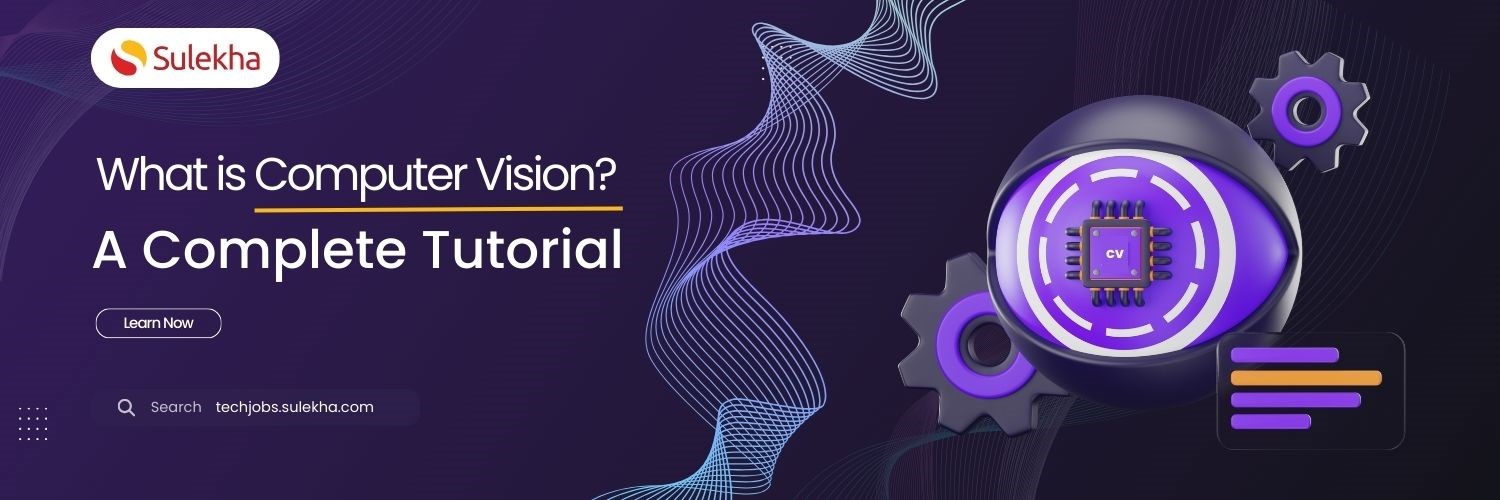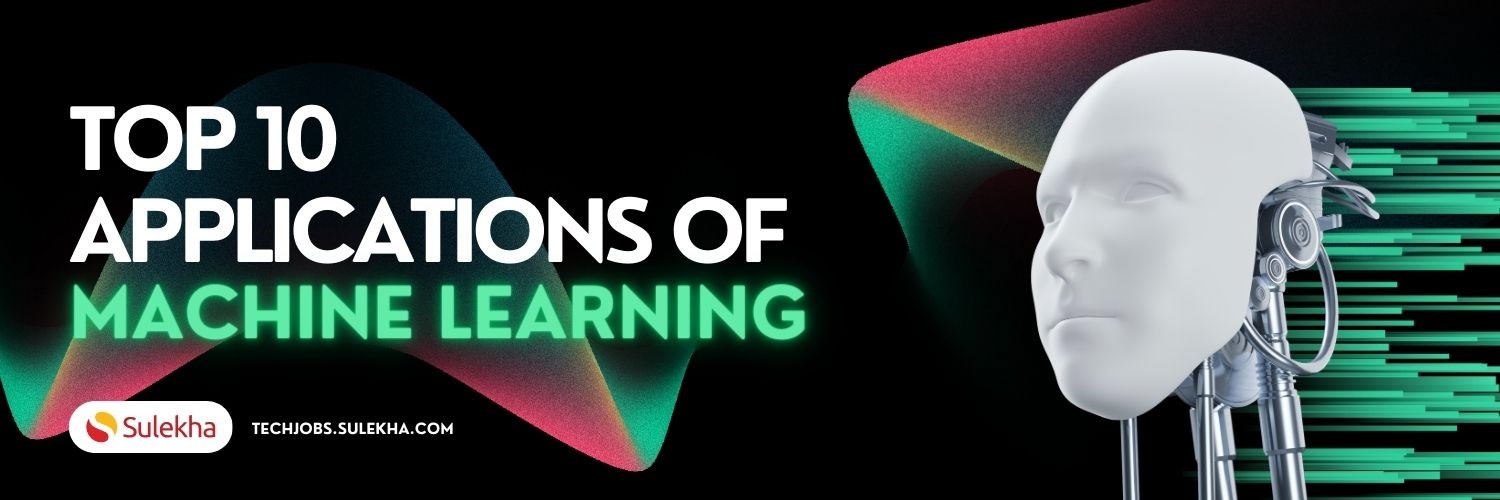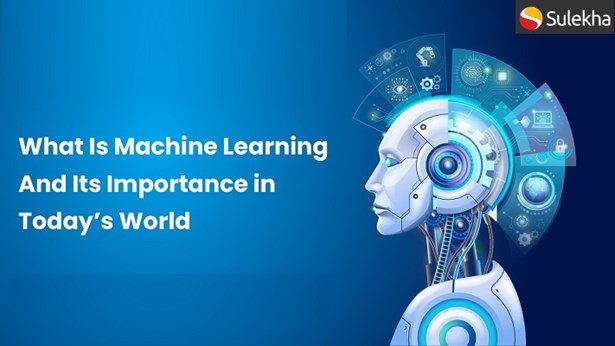What is computer vision? A complete Tutorial

The proliferating demand for computer vision applications has brought drastic technological changes in recent years. On the other hand, the rising adoption of Deep Learning techniques is shaping the market by improving the performance and accuracy of visual recognition tasks.
According to the Statista
· The market size in the Computer Vision market is projected to reach US$25.80bn in 2024.
· The market size is expected to show an annual growth rate (CAGR 2024-2030) of 10.50%, resulting in a market volume of US$46.96bn by 2030.
· In global comparison, the largest market size will be in the United States (US$6,877.00m in 2024).
Moreover, computed vision can be integrated with other spiraling technologies like augmented reality (AR) and virtual reality (VR) because they rely on computer vision techniques to understand and interact with the real world or virtual environments.
Furthermore, considerable effort has been taken to develop this model because it is robust, efficient, and capable of handling a large amount of data and real-time processing. The effort has enhanced applications in autonomous vehicles, robotics, surveillance systems, and healthcare imaging.
The growing demand for AI-based and automation industries further triggers the development of computer vision. Moreover, the emerging 4.0 industry and the increase in the need for accurate and efficient object detection paved the way for the expectation of the growth of computer vision technology.
The advancement of deep learning algorithms and the rise of cloud-based solutions for computer vision will help the market grow. Plus, as more emerging economies start using computer vision tech, there will be some big opportunities for companies in the market.
Overall, the market for AI technologies is vast, amounting to around 200 billion U.S. dollars in 2023, and is expected to grow well beyond that to over 1.8 trillion U.S. dollars by 2030.
According to Next Move Strategy Consulting, the AI market is set to explode in the next ten years. It's worth about 100 billion bucks now, but by 2030, it will shoot up to a whopping 2 trillion! AI will be everywhere—from supply chains to marketing to research and beyond. Moving forward, chatbots, image-generating AI, and mobile apps will be big players in the AI game.
Now, we shall discuss computer vision, its applications, and how It works.
What is Computer Vision?
Computer vision is a prominent field of Artificial Intelligence and computer science engineering. It can derive meaningful insight from visual data sets, such as images and videos. Moreover, it is apt to take appropriate actions and provide recommendations based on the extracted information.
Furthermore, Artificial intelligence is the branch of computer science that refers to the simulation of human intelligence processes by computer systems, encompassing tasks such as learning, reasoning, problem-solving, and perception. In short, AI is an intelligent system where Computer vision utilizes artificial intelligence to enable machines to interpret and understand visual information, facilitating tasks such as object recognition, image classification, and scene understanding.
What is the mechanism of computer vision?
Computer vision enables computers to interpret and understand visual information from images or videos as humans do. It involves developing algorithms and techniques to extract meaningful information from visual inputs, such as images or videos, and make sense of the data.
Computer vision programs use techniques, such as convolutional neural networks (CNNs), to process raw images, break them down into simple patterns, recognize patterns in images using neural networks with multiple layers, and ultimately understand the image's content.
This process allows computers to analyze and interpret visual data, enabling various applications across industries, from autonomous vehicles to facial recognition systems.
Task Associated with Computer Vision
Computer vision is a field of artificial intelligence that enables computers to observe, understand, and analyze visual data from images or videos. It involves developing algorithms and techniques to extract meaningful information from visual inputs, such as images or videos, and making sense of the data.
The four main tasks of computer vision are:
· Image Classification
· Object Detection
· Semantic Segmentation
· Instance Segmentation
Image Classification is the task of assigning an input image one label from a fixed set of categories. It is one of the core problems in CVs and has a wide variety of practical applications.
Object Detection is the process of detecting and locating objects in an image or video. It involves identifying the presence and location of multiple objects within a single image, enabling the tracking of individual objects over time.
Semantic Segmentation involves labeling each pixel in an image with a specific class or category. This allows for the identification of specific objects within an image and the Segmentation of different regions within the image.
Instance Segmentation is the task of identifying and segmenting individual instances of objects within an image. This allows for identifying and segmenting multiple instances of the same object within a single image, enabling the tracking of individual objects over time.
These tasks are essential for enabling machines to process and understand visual data, enabling various applications across various industries, from automated defect detection in a production line to facial recognition and autonomous driving.
How do you learn computer Vision? How do you become a computer Vision engineer?
How to become a computer vision engineer? Becoming a computer vision engineer requires a fundamental understanding of deep learning, machine learning, and artificial intelligence. If you intend to choose this field, follow our step-by-step guidance.
1. Build your strong foundation
As a first step, you must be ambitious to enter this booming career path. Before beginning this field, you should know advanced mathematical concepts such as Probability, statistics, linear algebra, calculus, etc.
Start acquiring knowledge of programming languages like Python or C++; it is an added advantage when entering this domain. Moreover, you can join Python with Machine learning course, which is demanding certification course.
2. Digital Image Processing
It would be best if you put effort into learning image editing tools like OpenCV, Viso Suits, TensorFlow, CUDA, MATLAB, Keras, and many others of your choice. Moreover, it would help if you had a profound understanding of their features, like median filtering, filtering, noise reduction, and edge detection. Furthermore, you should also know how to compress images and videos using JPEG and MPEG files. You can dive into this field once you've got the hang of image processing and restoration basics.
3. Machine learning understanding
Above two crucial skills, you should have a deep understanding of machine learning concepts like:
1. Supervised Learning
2. Unsupervised Learning
3. Semi-supervised Learning
4. Reinforcement Learning
5. Deep Learning
7. Convolutional Neural Networks (CNNs)
8. Recurrent Neural Networks (RNNs)
9. Ensemble Learning
10. Evaluation Metrics
4. Join the computer vision course
Join the certification course because you will gain hands-on experience.
5. Books and resources
Many great books cover computer vision fundamentals and applications. Look for titles by Richard Szeliski or Milan Sonka et al.
6. Projects
Working on projects is the best way to solidify your learning. Many beginner-friendly computer vision projects can be found online. Start with basic tasks like image classification or object detection and gradually progress to more complex problems.
Remember, getting into computer vision requires dedication and continuous learning. Start with a solid foundation, focus on practical experience, and stay curious about the exciting applications of this field.
Applications of computer vision
Facial recognition
Computer vision lets us detect people's facial images to ascertain their identity. First, the machine provides an image based on the integrated image data, which is then used by computer vision algorithms to detect facial features and perform comparative analysis to find fake profiles.
For example:
Facebook, a well-known social media platform, utilizes facial recognition to detect and tag users.
In addition, different government spy agencies use this function to spot criminals in video footage.
Healthcare and Medicine
In the healthcare and medicine industry, computer vision plays a crucial role because it is used to detect diseases. In the early days, detecting cancer and tumors was a time-consuming process. But now, by utilizing computer vision, everything is made possible and can be predicted accurately. This technology makes accurate chemotherapy response assessments possible, and doctors can diagnose patients, detect cancer, and provide life-saving surgery.
Self-driving vehicles
Computer vision technology contributes to its role in self-driving vehicles. In these vehicles, computer vision captures videos of their surroundings from different angles and integrates them into the software.
This allows it to detect other cars and objects around it, read traffic signals, determine paths, and safely drive passengers to their destinations.
Optical character recognition (OCR)
Optical Character Recognition (OCR) wouldn't be possible without computer vision. It acts like a digital detective, first sifting through an image to identify text areas, then meticulously separating individual characters, and finally recognizing them by comparing them to a massive character database, ultimately transforming the image into editable text.
Machine inspection
Computer vision is used for automatic image inspection. It is predominantly utilized for detecting defects in machines, their features, and functional faults. Moreover, it can analyze products at lightning speed, inspecting thousands of items per minute.
Retail (e.g., automated checkouts)
Computer technology is widely used in the retail industry, with applications such as electronic point of sale (EPOS) systems that electronically track sales of goods in a retail environment. These systems use barcodes on goods, which are scanned at checkouts to add each item to the total bill automatically. EPOS systems also display the total cost, calculate any change required for cash payments, and conduct electronic funds transfers for debit or credit card payments. After a transaction, the company's stock database is automatically updated.
3D model building
This is also called 3D modeling. It involves constructing three-dimensional representations of objects or environments using computer software or hardware. In 3D modeling, computer vision builds existing objects in 3D computer models.
Furthermore, 3D modeling has various applications in architecture, gaming, animation, film production, industrial design, virtual reality, augmented reality, medical imaging, automotive design, and product visualization.
Medical imaging
Medical imaging is a crucial application of computer vision in healthcare, enabling the interpretation and analysis of medical images like X-rays, MRIs, and CT scans. Computer vision algorithms can accurately identify anomalies, tumors, and fractures in these images, aiding radiologists and physicians in making informed diagnoses. This technology allows for early disease detection by detecting subtle changes invisible to the human eye, facilitating timely intervention and improved patient outcomes. Additionally, computer vision systems can provide real-time surgical assistance by overlaying vital information during surgeries, enhancing precision and reducing the risk of errors.
Automotive safety
In automotive industries, computer vision plays a crucial role in safety features.
Example:
If vehicles are programmed to detect dangers and objects, they can prevent accidents and save thousands of lives and property.
Surveillance
1. Object Detection: It spots people, vehicles, or objects of interest in camera footage.
2. Behavior Analysis: It analyzes movements, like someone lingering in restricted areas.
3. Facial Recognition: It identifies known individuals or suspects in the crowd.
4. Anomaly Detection: It flags unusual activity, like objects left unattended.
5. Real-time Alerts: It triggers alarms or notifications for immediate security response.
Fingerprint recognition and Biometrics
Computer vision is integral to fingerprint recognition and biometrics. It extracts unique features like ridge patterns and minutiae points from fingerprint images. Algorithms then compare these features with stored templates for identification. Pre-processing techniques enhance image quality, while Segmentation isolates the fingerprint from its background. The quality assessment ensures accurate recognition, and real-time systems employ computer vision for swift authentication in applications such as access control.
Why is computer vision engineering a demanding career path?
Computer vision engineering is in high demand due to its applications across industries like healthcare, autonomous vehicles, and security, where the ability to analyze and interpret visual data is crucial for innovation and problem-solving, making it an essential and sought-after skill.
According to the United States Bureau of Labor Statistics, computer and information research scientists' jobs, including computer vision engineers, are expected to grow by 15% between 2019 and 2029. The average salary for a computer vision engineer in the United States is $122,000, with entry-level positions starting around $79,000 and experienced professionals earning upwards of $162,000 annually.
Top companies in the USA that hire computer vision engineers include VoxelCloud, a Los Angeles-based leader in artificial intelligence analysis of medical images, and Mashgin, a Palo Alto-based startup developing the future of checkout experiences using 3D computer vision and deep learning. Other notable companies include Hover.
In conclusion, computer vision is a testament to the incredible potential of artificial intelligence to mimic and even exceed human capabilities in visual perception. As we've explored its foundational concepts, diverse applications, and transformative impact, it becomes evident that computer vision is not merely a technological advancement but a gateway to a future where machines seamlessly interact with the visual world. With ongoing research, innovation, and collaboration across disciplines, we are poised to unlock even greater possibilities in computer vision, shaping a world where intelligent machines not only see but also comprehend and interpret our reality in once unimaginable ways.
Find a course provider to learn Machine Learning
Java training | J2EE training | J2EE Jboss training | Apache JMeter trainingTake the next step towards your professional goals in Machine Learning
Don't hesitate to talk with our course advisor right now
Receive a call
Contact NowMake a call
+1-732-338-7323Take our FREE Skill Assessment Test to discover your strengths and earn a certificate upon completion.
Enroll for the next batch
best machine learning course for beginners
- Dec 12 2025
- Online
best machine learning course for beginners
- Dec 15 2025
- Online
best machine learning course for beginners
- Dec 16 2025
- Online
best machine learning course for beginners
- Dec 17 2025
- Online
best machine learning course for beginners
- Dec 18 2025
- Online
Related blogs on Machine Learning to learn more

How Machine Learning Applications Revolutionizes Everyday Technology and Business
Discover the vast range of machine learning applications across industries and learn how machine learning is transforming businesses and revolutionizing the way we live and work.

Top 10 Applications of Machine Learning
Discover the top 10 machine learning applications revolutionizing industries worldwide, from predictive analytics in finance to healthcare diagnosis and recommendation systems in e-commerce.

What is Machine Learning?
ML is the branch of artificial intelligence

Data Science and Machine Learning - The future impact in the world of healthcare
Data Science and Machine Learning - The future impact in the world of healthcare

Adidas now allows consumers to design shoes by themselves
Adidas, a world-famous sports brand, is now banking on machine learning technology to understand consumer trends and preferences and incorporate it into its wide-spread supply chain. What this move does is it allows their customers to design the prod
Latest blogs on technology to explore

From Student to AI Pro: What Does Prompt Engineering Entail and How Do You Start?
Explore the growing field of prompt engineering, a vital skill for AI enthusiasts. Learn how to craft optimized prompts for tools like ChatGPT and Gemini, and discover the career opportunities and skills needed to succeed in this fast-evolving indust

How Security Classification Guides Strengthen Data Protection in Modern Cybersecurity
A Security Classification Guide (SCG) defines data protection standards, ensuring sensitive information is handled securely across all levels. By outlining confidentiality, access controls, and declassification procedures, SCGs strengthen cybersecuri

Artificial Intelligence – A Growing Field of Study for Modern Learners
Artificial Intelligence is becoming a top study choice due to high job demand and future scope. This blog explains key subjects, career opportunities, and a simple AI study roadmap to help beginners start learning and build a strong career in the AI

Java in 2026: Why This ‘Old’ Language Is Still Your Golden Ticket to a Tech Career (And Where to Learn It!
Think Java is old news? Think again! 90% of Fortune 500 companies (yes, including Google, Amazon, and Netflix) run on Java (Oracle, 2025). From Android apps to banking systems, Java is the backbone of tech—and Sulekha IT Services is your fast track t

From Student to AI Pro: What Does Prompt Engineering Entail and How Do You Start?
Learn what prompt engineering is, why it matters, and how students and professionals can start mastering AI tools like ChatGPT, Gemini, and Copilot.

Cyber Security in 2025: The Golden Ticket to a Future-Proof Career
Cyber security jobs are growing 35% faster than any other tech field (U.S. Bureau of Labor Statistics, 2024)—and the average salary is $100,000+ per year! In a world where data breaches cost businesses $4.45 million on average (IBM, 2024), cyber secu

SAP SD in 2025: Your Ticket to a High-Flying IT Career
In the fast-paced world of IT and enterprise software, SAP SD (Sales and Distribution) is the secret sauce that keeps businesses running smoothly. Whether it’s managing customer orders, pricing, shipping, or billing, SAP SD is the backbone of sales o

SAP FICO in 2025: Salary, Jobs & How to Get Certified
AP FICO professionals earn $90,000–$130,000/year in the USA and Canada—and demand is skyrocketing! If you’re eyeing a future-proof IT career, SAP FICO (Financial Accounting & Controlling) is your golden ticket. But where do you start? Sulekha IT Serv

Train Like an AI Engineer: The Smartest Career Move You’ll Make This Year!
Why AI Engineering Is the Hottest Skillset Right Now From self-driving cars to chatbots that sound eerily human, Artificial Intelligence is no longer science fiction — it’s the backbone of modern tech. And guess what? Companies across the USA and Can

Confidence Intervals & Hypothesis Tests: The Data Science Path to Generalization
Learn how confidence intervals and hypothesis tests turn sample data into reliable population insights in data science. Understand CLT, p-values, and significance to generalize results, quantify uncertainty, and make evidence-based decisions.